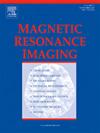MATI:一个gpu加速的工具箱,用于微结构扩散MRI模拟和数据拟合,具有图形用户界面。
IF 2
4区 医学
Q2 RADIOLOGY, NUCLEAR MEDICINE & MEDICAL IMAGING
引用次数: 0
摘要
目的:介绍MATI(微结构分析成像工具箱),这是一个多功能的基于matlab的工具箱,结合了微结构dMRI研究的模拟和数据拟合能力。方法:MATI提供了一个用户友好的图形用户界面,使研究人员,包括那些没有太多编程经验的研究人员,能够执行微结构MRI研究的高级模拟和数据分析。对于模拟,MATI支持任意微结构组织和脉冲序列。对于数据拟合,MATI支持一系列拟合方法,包括传统的非线性最小二乘、贝叶斯方法、机器学习和字典匹配方法,允许用户根据特定的研究需求定制分析。结果:通过向量化矩阵运算和高性能数值库的优化,MATI实现了很高的计算效率,可以在CPU和GPU硬件上进行快速模拟和数据拟合。虽然是为微结构dMRI设计的,但MATI的广义框架可以扩展到其他成像方法,使其成为定量MRI研究的灵活和可扩展的工具。结论:MATI为将先进的显微结构MRI技术转化为临床应用提供了重要的一步。本文章由计算机程序翻译,如有差异,请以英文原文为准。
MATI: A GPU-accelerated toolbox for microstructural diffusion MRI simulation and data fitting with a graphical user interface
Purpose
To introduce MATI (Microstructural Analysis Toolbox for Imaging), a versatile MATLAB-based toolbox that combines both simulation and data fitting capabilities for microstructural dMRI research.
Methods
MATI provides a user-friendly, graphical user interface that enables researchers, including those without much programming experience, to perform advanced simulations and data analyses for microstructural MRI research. For simulation, MATI supports arbitrary microstructural tissues and pulse sequences. For data fitting, MATI supports a range of fitting methods, including traditional non-linear least squares, Bayesian approaches, machine learning, and dictionary matching methods, allowing users to tailor analyses based on specific research needs.
Results
Optimized with vectorized matrix operations and high-performance numerical libraries, MATI achieves high computational efficiency, enabling rapid simulations and data fitting on CPU and GPU hardware. While designed for microstructural dMRI, MATI's generalized framework can be extended to other imaging methods, making it a flexible and scalable tool for quantitative MRI research.
Conclusion
MATI offers a significant step toward translating advanced microstructural MRI techniques into clinical applications.
求助全文
通过发布文献求助,成功后即可免费获取论文全文。
去求助
来源期刊

Magnetic resonance imaging
医学-核医学
CiteScore
4.70
自引率
4.00%
发文量
194
审稿时长
83 days
期刊介绍:
Magnetic Resonance Imaging (MRI) is the first international multidisciplinary journal encompassing physical, life, and clinical science investigations as they relate to the development and use of magnetic resonance imaging. MRI is dedicated to both basic research, technological innovation and applications, providing a single forum for communication among radiologists, physicists, chemists, biochemists, biologists, engineers, internists, pathologists, physiologists, computer scientists, and mathematicians.
 求助内容:
求助内容: 应助结果提醒方式:
应助结果提醒方式:


